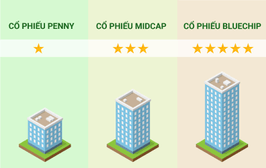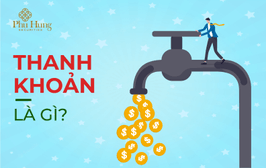Any shareholder buying shares or even an F0 investor is interested in dividends, this is an important term that stock investors need to understand and understand. So what are dividends? What types of dividends are there? What are the regulations on dividend payment? Follow PHS to find out through the article below.
What are dividends?
Dividend concept
Dividend is a part of the profit after tax of a joint stock company that is paid to shareholders. When the company makes a profit, part of the profit will be used to reinvest in the business called retained earnings, the rest of the profit is paid out to the shareholders called dividends.
Dividends must be approved by shareholders after voting. Along with companies, many mutual funds and ETFs also make payments. The board can choose to issue in different time frames and with different payout rates. It can be paid at a fixed frequency, such as monthly, quarterly, or annually. At the same time, in addition to ordinary stock dividends, there are also preferred stock dividends.
Current forms of dividend payment
-
Cash dividend payment
In the form of cash dividend, the company will pay the dividend in the currency of that country through wire transfer, issue a check, credit to the shareholder's securities account or send it directly to contact by post.
Note that the cash dividend is calculated based on the share par value of VND 10,000/share, not the current market price.
-
Paying stock dividends
The form of stock dividend is that the company is retaining profits to continue investing, the number of shares held by investors increases. Usually, the payment in shares is chosen by many businesses, they issue more shares or use treasury shares to pay dividends to shareholders.
The company does not need to carry out any issuance or offering procedures, just increase the charter capital corresponding to the total par value of shares paying dividends within 10 days.
-
Paying dividends by bonus shares
The purpose of issuing bonus shares is to help the company reduce retained earnings and increase charter capital, but does not change the source of share capital. Businesses choose this form to help shareholders do not have to pay additional personal income tax. There are also a few organizations with the aim of increasing charter capital, increasing financial capacity to access larger loans, and implementing other projects in the future.
The impact of dividends on stock prices
Since a dividend is a fixed payment that cannot be changed, the payment will result in the company spending money out of the company's book assets and the business's accounts. As a result, the payout will likely impact the stock price. Prices may increase at the time of publication to an approximate rate of pay. Then decrease by a similar amount on the opening of the ex-dividend day.
Regulations on dividend payment
1. Conditions for paying dividends
According to the provisions of Article 135 of the Enterprise Law 2020, a joint-stock company may only pay dividends of ordinary shares when it fully meets the following conditions:
- The enterprise has well fulfilled its tax payment obligations and other financial obligations in accordance with current laws.
- The enterprise has set aside company funds, reserve funds, and offset previous losses (if any) in accordance with the law and the company's charter.
- Immediately after completing the dividend payment, the company still ensures to pay all property obligations and other due debts.
Note: Dividends for preferred shares are made according to the conditions applicable to each type of preference shares separately. Dividends paid on ordinary shares are determined based on the amount of net profit realized as well as the dividend payment deducted from retained earnings.
2. Dividend payment process
According to Clause 4, Article 135 of the Enterprise Law 2020, there are all 5 steps in the dividend payment process:
- Step 1: Meeting of the Board of Directors to propose the dividend payment, decide on the time and procedures for paying dividends.
- Step 2: The General Meeting of Shareholders holds an annual meeting, considers the dividend payment plan, decides the dividend level for each share of each specific class and sets a time.
- Step 3: Meeting of the Board of Directors to make a list of shareholders who receive dividends, determine the level of dividends to be paid for each share, term and form of payment no later than 30 days before each payment.
- Step 4: Send a notice to shareholders about the payment of dividends, make sure to send it to the registered address of the shareholder at least 15 days before the date of payment.
- Step 5: Proceed to pay dividends of the company according to the previously announced time limit.
There are many forms of dividend payment, especially cash payment must be made in Vietnam Dong, complying with the payment method of current law.
3. Notice of dividend payment
Notice of dividend payment will be sent to shareholders at least 15 days before the payment is made. The notice includes important information: Issuing company name, head office address, full name, contact address, nationality, personal legal documents if the shareholder is an individual, name, code corporate tax number or legal documents of the organization, number of shares, dividend rate for each share, time and method of receipt,...
Conclusion
Through the above sharing, PHS hopes that investors can better understand the concept of dividends as well as the notes on paying dividends to shareholders. At the same time, the above article also helps F0 investors understand more knowledge about securities to start their investment journey. If you are an F0 investor who wants to invest right away, please open an account at PHS.











